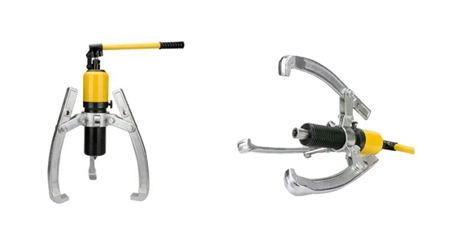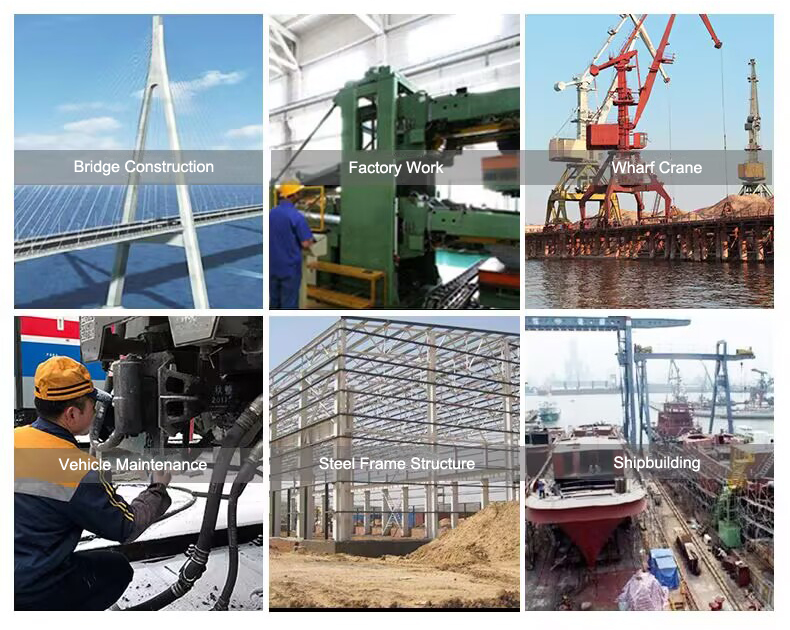What is a Hydraulic Puller?
Hydraulic tools, as a category of machinery, are instrumental in harnessing the power of hydraulic fluid to perform a wide array of tasks. These tools, with their diverse applications, play a crucial role in industries such as construction, manufacturing, and maintenance. Among these hydraulic tools, the hydraulic puller stands out as a specialized device designed to tackle the challenge of disassembling tightly fitted or press-fitted components with precision and efficiency.
Components and Working Mechanism
- Hydraulic Cylinder:
At the core of the hydraulic puller is the hydraulic cylinder, a meticulously designed component responsible for converting hydraulic pressure into mechanical force. The cylinder houses a piston, and as hydraulic pressure is applied, the piston moves, creating a controlled and powerful force that is then transmitted to the pulling mechanism. - Pulling Mechanism:
Hydraulic pullers employ various pulling mechanisms depending on their design and intended application. Commonly, these mechanisms involve jaws or arms that grip onto the component slated for removal. As hydraulic pressure increases, these gripping elements exert a pulling force on the component, gradually loosening it from its tightly fitted position. Some pullers utilize a combination of screws, arms, and other elements to achieve a secure grip and controlled extraction. - Control Mechanism:
The efficiency and safety of hydraulic pullers are significantly enhanced by their advanced control mechanisms. These mechanisms may include pressure-relief valves, which safeguard against excessive force application, preventing damage to both the puller and the component. Adjustable settings allow operators to fine-tune the force applied, ensuring a tailored approach to different disassembly tasks. Furthermore, the incorporation of hydraulic pumps with manual, electric, or pneumatic drives adds an extra layer of user-friendly control to the operation.
Types of Hydraulic Pullers
2 Jaw and 3 Jaw Pullers
Two-jaw and three-jaw configurations are two of the most common types of hydraulic pullers. Two-jaw pullers are suitable for applications where the load is evenly distributed, and components have a symmetric shape. Three-jaw pullers, on the other hand, provide a more balanced grip, making them ideal for irregularly shaped components where an even distribution of force is essential. ATO offers 5-ton to 50-ton 2/3 jaw hydraulic pullers with a detachable handle and 360 pressure direction, which is easy to use in confined spaces.

Specialty Pullers
In addition to standard configurations, there is a range of specialty hydraulic pullers tailored for specific applications. Bearing pullers, gear pullers, and pulley pullers are examples of specialized tools designed to address the unique challenges posed by different types of components. These specialized pullers ensure efficient and safe extraction, minimizing the risk of damage.
Advantages of Hydraulic Pullers
- Precision and Control: One of the key advantages of hydraulic pullers is their precision and control in force application. Operators can exert the required force with meticulous accuracy, minimizing the risk of unintended damage to both the component and the surrounding machinery. This level of precision is particularly crucial in industries where delicate components are involved.
- Increased Efficiency: Hydraulic pullers significantly contribute to increased efficiency in disassembly processes. Compared to traditional manual or mechanical methods, hydraulic pullers require less effort from operators while delivering substantial pulling force. This not only accelerates the disassembly process but also reduces operator fatigue, leading to more productive workflows.
- Safety: Safety is paramount in any industrial setting, and hydraulic pullers play a pivotal role in enhancing workplace safety. The controlled nature of hydraulic pullers ensures that force is applied gradually and within safe limits. This minimizes the risk of accidents or injuries during the disassembly process, creating a safer working environment for operators. ATO hydraulic cylinder adopts a solid steel integral processing and forming design, which has a high safety factor. They can be used both horizontally and vertically. The elastic thimble can accurately locate the center. Both the claw hook and the claw hook frame are forged with high-strength alloy steel that is not easily deformed.
Hydraulic pullers find widespread applications across industries for the efficient and controlled removal of tightly fitted or press-fitted components, such as bearings, gears, and pulleys. These versatile tools are extensively utilized in automotive maintenance and repair, manufacturing processes, construction projects, and various machinery disassembly tasks. Their precision, ability to exert substantial pulling force and adaptability to different configurations make hydraulic pullers indispensable in scenarios where traditional disassembly methods may be impractical or risk damaging the components.
In conclusion, hydraulic pullers have evolved into indispensable tools in modern industrial settings, providing an efficient and controlled solution for the disassembly of tightly fitted components. Their adaptability, precision, and safety features have positioned them as essential assets in industries where equipment reliability and maintenance are critical. As technology continues to advance, ATO.com will introduce further innovations in hydraulic puller designs, focusing on increased efficiency, user-friendly control and enhanced durability. The ongoing integration of technology and industry needs promises a future where hydraulic pullers play an even more central role in the seamless maintenance and repair of mechanical systems, contributing to increased productivity and reduced downtime across various industrial sectors.

